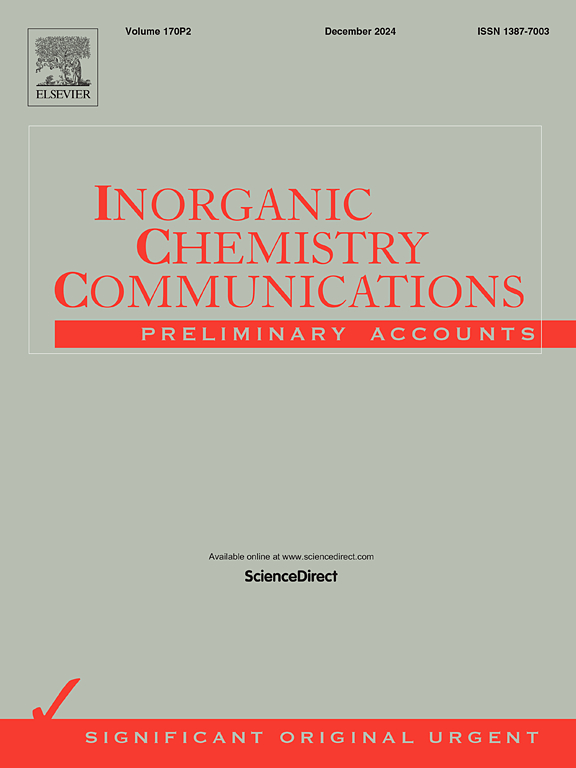Boosting the efficiency of CoSe2 electrocatalyst for water splitting with Zn and Mn doping: Robust and durable electrocatalysts in alkaline media
IF 4.4
3区 化学
Q1 CHEMISTRY, INORGANIC & NUCLEAR
引用次数: 0
Abstract
The growing concerns about the depletion of fossil fuel reserves and the resulting global environmental issues have driven efforts to identify alternative energy sources. Hydrogen, possessing high energy density and emitting no carbon, presents a promising alternative to fossil fuels as a clean energy carrier. Herein, we report a simple, low-cost, and rapid method for synthesizing Zn and Mn-doped CoSe2 on nickel foam for overall water splitting at high current densities. Firstly, we synthesized CoSe2 and investigated the effective parameters of CoSe2 synthesis to find the optimum electrode. Then, Zn and Mn were doped into the CoSe2 lattice and explored their electrocatalytic activity. Mn-CoSe2 and Zn-CoSe2 require only 415 and 561 mV, respectively, to reach −500 mA cm−2, which is ideal. Also, Mn and Zn-doped CoSe2 demonstrate good OER electrocatalytic performance with a potential of 1.95 and 1.98 V, respectively, at 300 mA cm−2. The results of experiments indicate that the highly active electrocatalytic property of Mn-CoSe2 and Zn-CoSe2 results from the doping of Mn and Zn into the CoSe2 lattice. Finally, Mn-doped CoSe2 demonstrates excellent electrocatalytic activity, maintaining stability even after 12 h and 2000 cycles of testing for hydrogen and oxygen evolution reactions (HER and OER). Additionally, the Mn-CoSe2 catalyst is synthesized via a facile, binder-free, and time-efficient method, making it economically viable. Furthermore, the structural and electronic properties imparted by the Mn-Co combination significantly improve charge transfer kinetics and catalytic stability under operating conditions. These advantages establish Mn-CoSe2 as a promising candidate for sustainable and large-scale water-splitting applications, addressing the growing demand for clean and renewable hydrogen energy.

求助全文
约1分钟内获得全文
求助全文
来源期刊

Inorganic Chemistry Communications
化学-无机化学与核化学
CiteScore
5.50
自引率
7.90%
发文量
1013
审稿时长
53 days
期刊介绍:
Launched in January 1998, Inorganic Chemistry Communications is an international journal dedicated to the rapid publication of short communications in the major areas of inorganic, organometallic and supramolecular chemistry. Topics include synthetic and reaction chemistry, kinetics and mechanisms of reactions, bioinorganic chemistry, photochemistry and the use of metal and organometallic compounds in stoichiometric and catalytic synthesis or organic compounds.
 求助内容:
求助内容: 应助结果提醒方式:
应助结果提醒方式:


